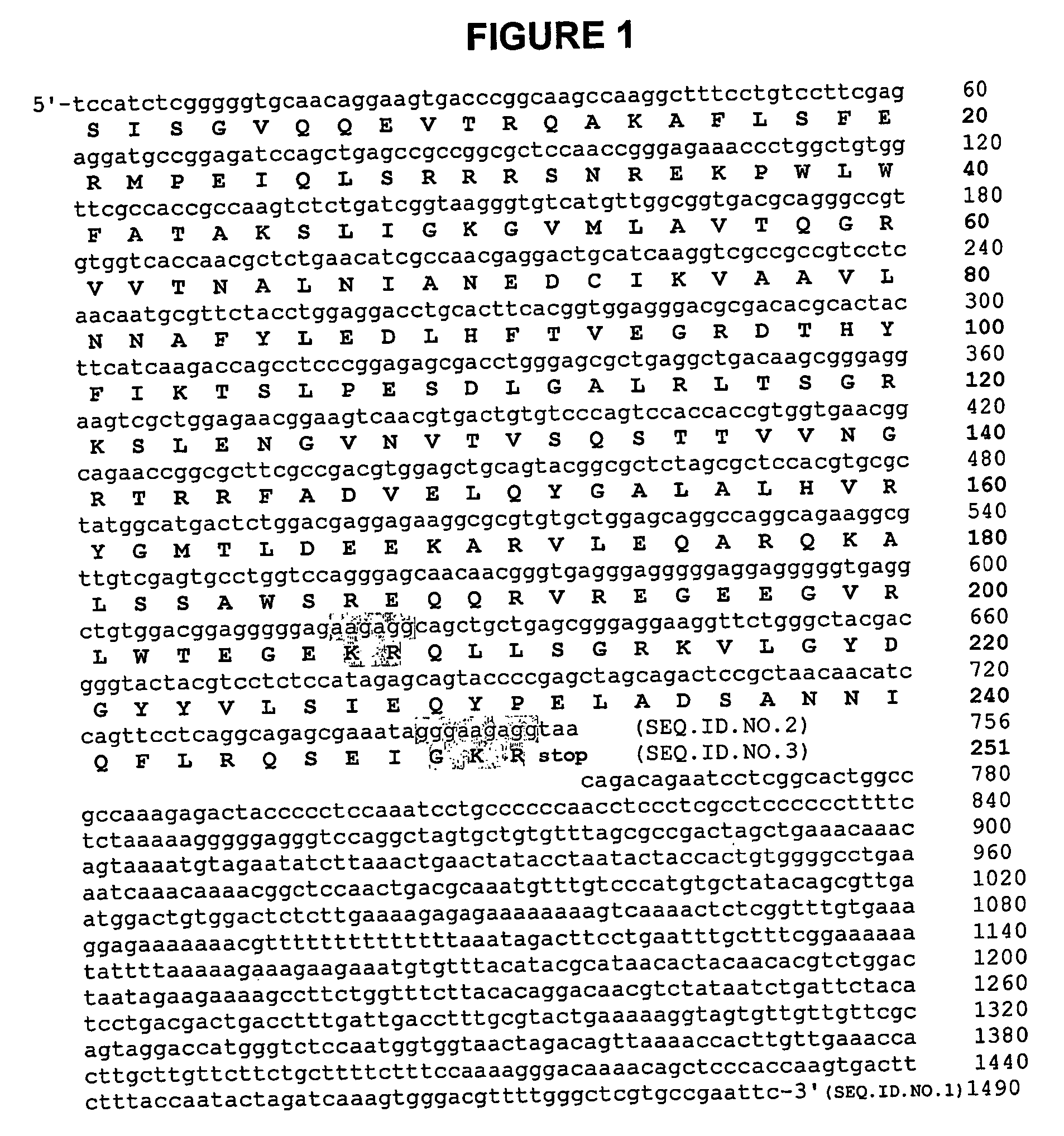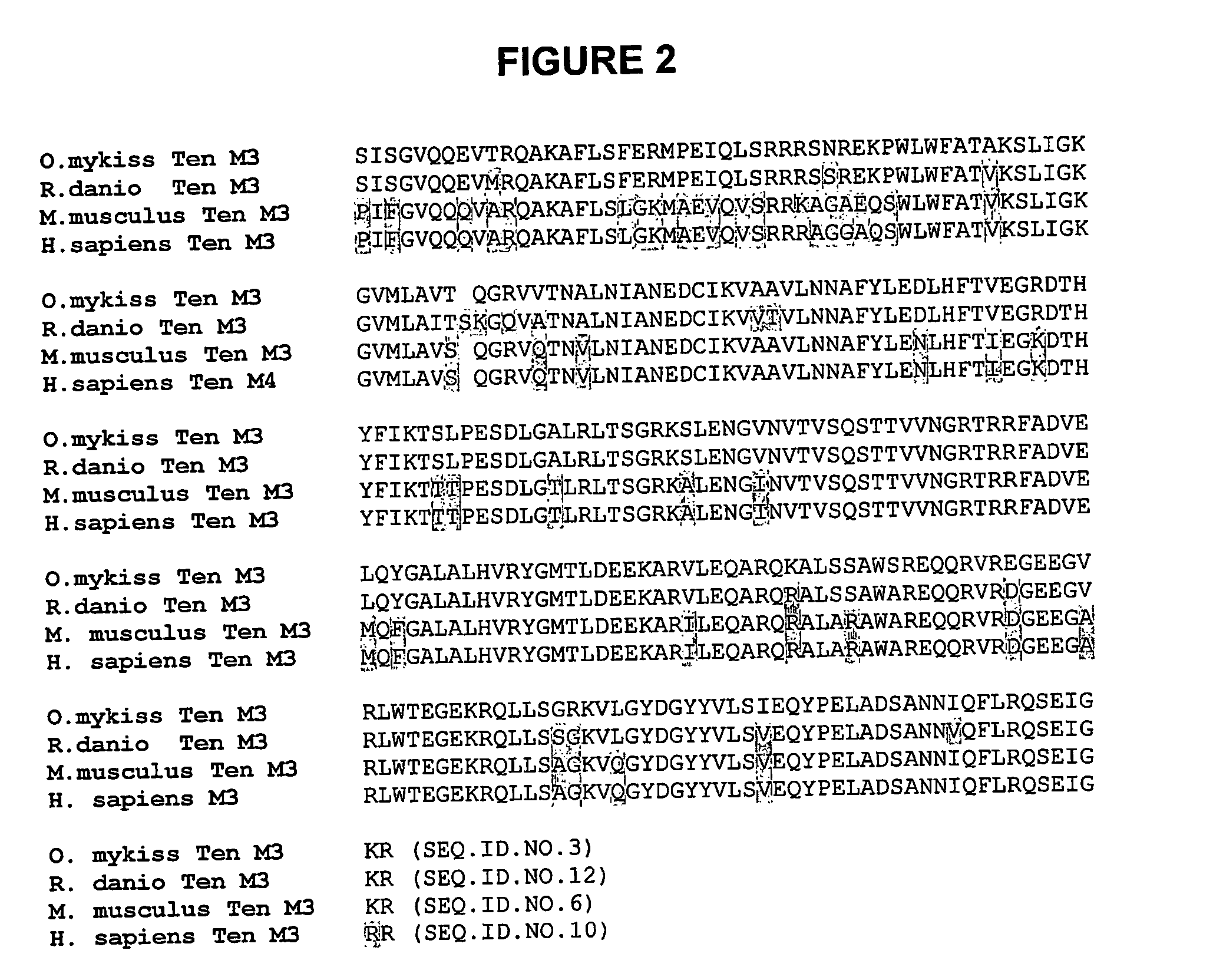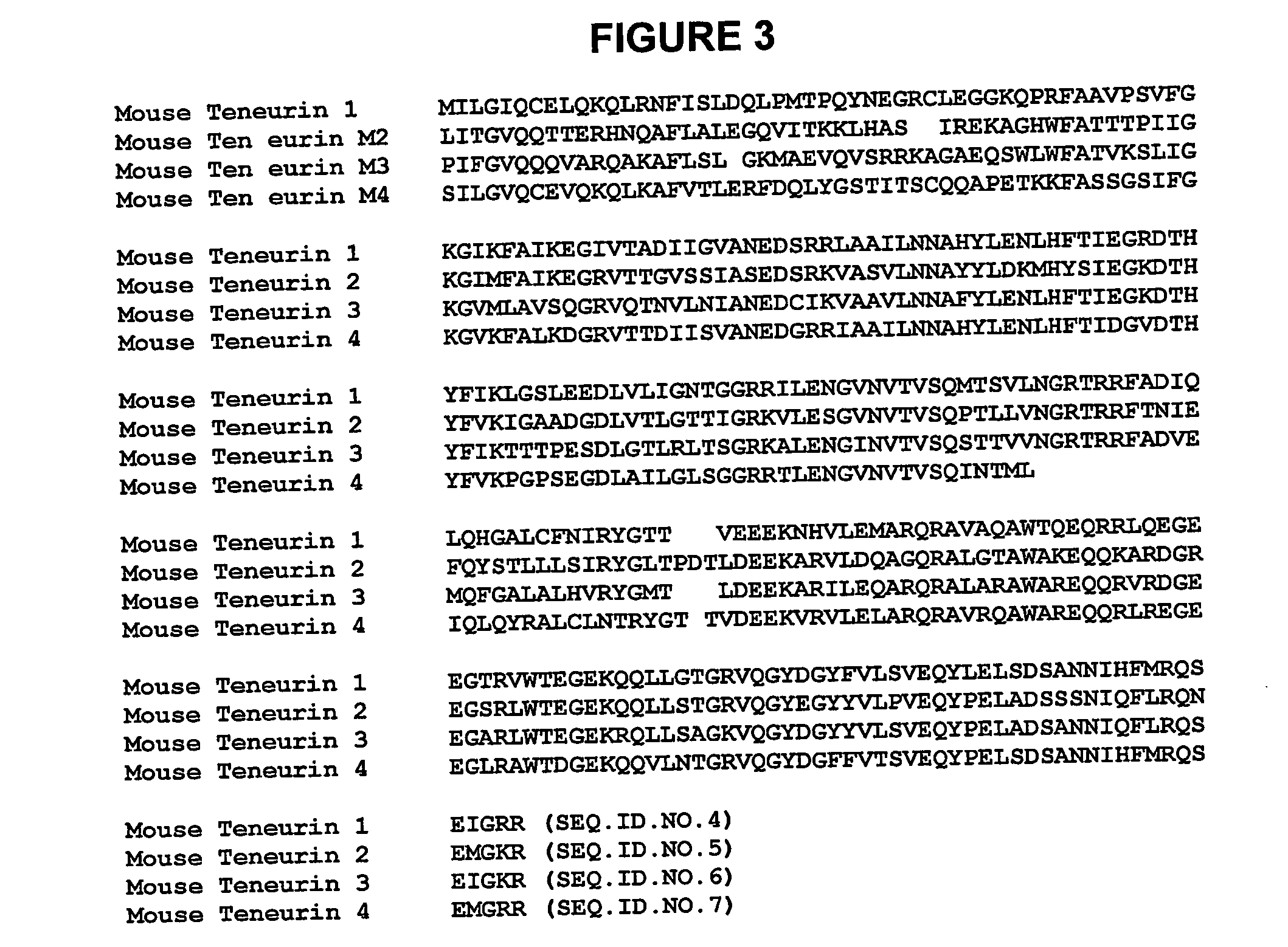Teneurin c-terminal associated peptides (tcap) and uses thereof
a c-terminal and associated peptide technology, applied in the field of teneurin c-terminal associated peptides, can solve the problems of incomplete understanding of the origin of neuropathological conditions, incomplete understanding of inability to fully understand the origin of neuropathological disorders, etc., to achieve normalizing the stress or anxiety response in an animal and modulating the stress response
- Summary
- Abstract
- Description
- Claims
- Application Information
AI Technical Summary
Benefits of technology
Problems solved by technology
Method used
Image
Examples
example 1
Identification of Teneurin C-Terminal Associated Peptide (TCAP)
A. Identification of TCAP mRNA
[0245] Cloning of mRNA. A rainbow trout hypothalamic cDNA library was constructed as previously described (Barsyte et al., 1999) using a unidirectional vector (Unizap, Stratagene, La Jolla Calif.). A total of 600,000 clones were screened using a randomly labelled 305-bp hamster urocortin cDNA probe (Robinson et al., 1999)[SEQ. ID. NO 120-5′-att cac cgccgc tcg gga tct gag cct gca ggc gag cgg cag cga cgg gaa gac ctt ccg ctg tcc atc gac ctc aca ftc cac ctg cta cgg acc ctg ctg gag atg gcc cgg aca cag agc caa cgc gag cga gca gag cag aac cga atc ata ctc aac gcg gtg ggc aag tga tcg gcc cgg tgt ggg acc cca aaa ggc tcg acc ctt tcc cct acc tac ccc ggg gct gaa gtc acg cga ccg aag tcg gct tag tcc cgc ggt gca gcg cct ccc aga gtt acc ctg aac aat ccc gc-3′.] Primary, secondary and tertiary screens all utilized the same probe. The size of the clones, positive after the final screen, were determined by re...
example 2
Detection of the Cleaved TCAP in Cell and Tissue Extracts
[0252] HPLC as described in Example 1 can be used to detect TCAP. Mass Spectroscopy can also be used. Other detection methods can also be combined with HPLC, Mass Spectroscopy or used on their own, such as radio immunoassays, ELISAs, capillary electrophoresis, immunofluorescence confocal microscopy. Mass spectrometric methods identify molecules on the basis of a charged molecule's (ion) mass to charge ratio. A precise determination of the molecules mass is then determined allowing for identification of the molecule. Larger peptides can be sequenced by subsequent fragmentation of the peptide in a collision chamber. This causes preferential breaking of the peptide bonds. The amino acid and peptide fragments are identified by their mass to charge ratio. Radioimmunoassays or enzyme-linked immunosorbant assays (ELISA) utilize an antiserum specific for the molecule of interest. The molecule (TCAP) competes with a tagged structurall...
example 3
Synthesis and Solubilization of Peptide
[0254] Rainbow trout TCAP-3 [SEQ. ID. NO: 13], wherein the terminal isoleucine (I) was amidated [to give SEQ. ID. NO. 15] was synthesized on an automated peptide synthesizer, Model Novayn Crystal (NovaBiochem, UK Ltd. Nottingham, UK) on PEG-PS resin using continuous flow Fmoc chemistry (Calbiochem-Novabiochem Group, San Diego, Calif.). Eight times excess diisopropyl ethy amine (Sigma Aldrich Canada Ltd) and four times excess Fmoc-amino acid activated with HATU (O-(7-azabenzotriazol-1-,3,3-tetramethyluronium hexfluorophosphate, Applied Biosystems, Foster City, Calif.) at a 1:1 (mole / mole) ratio were used during the coupling reaction. The reaction time was 1 hour. A solution of 20% piperidine (Sigma-Aldrich Canada Ltd) in N,N-dimethylformide (DMF; Calcdon Laboratories Ltd, Canada was used for the deprotection step in the synthesis cycle. The DMF was purified in-house and used fresh each time as a solvent for the synthesis. The cleavage / deprotect...
PUM
| Property | Measurement | Unit |
|---|---|---|
| temperature | aaaaa | aaaaa |
| temperature | aaaaa | aaaaa |
| pH | aaaaa | aaaaa |
Abstract
Description
Claims
Application Information
 Login to view more
Login to view more - R&D Engineer
- R&D Manager
- IP Professional
- Industry Leading Data Capabilities
- Powerful AI technology
- Patent DNA Extraction
Browse by: Latest US Patents, China's latest patents, Technical Efficacy Thesaurus, Application Domain, Technology Topic.
© 2024 PatSnap. All rights reserved.Legal|Privacy policy|Modern Slavery Act Transparency Statement|Sitemap



